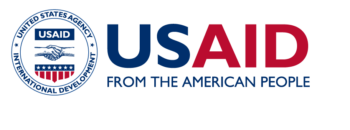Child Protection in Outbreaks: Preventing Harm to Children in Infectious Disease Outbreaks (Mini-Guide 5)
This Mini-Guide is aimed at humanitarian personnel working in health and child protection as well as those specialising in mental health and psychosocial support and members of the social service workforce. This Mini-Guide is for use during the preparedness, response and recovery phases of an outbreak, in settings that are in crisis or that become a humanitarian setting.
This Mini-Guide aims to support relevant personnel in:
- Understanding potential harm to children in the context of infectious disease outbreaks;
- Identifying appropriate prevention strategies based on the root causes of harm; and,
- Implementing key intersectoral actions at each step of the project cycle to prevent harm to children in outbreaks.
View and download the Child Protection in Outbreaks: Preventing Harm to Children in Infectious Disease Outbreaks (Mini-Guide 5) on the Alliance website:
- English: Mini Guide 5 | Child Protection in Outbreaks: Preventing Harm to Children in Infectious Disease Outbreaks
- Español: Miniguía #5 | Protección infantil en brotes de enfermedades: Prevención de daños a los niños en brotes de enfermedades infecciosas
- Français: Mini-guide #5 | Protection de l’enfance lors d’épidémies : prévenir les dommages aux enfants lors d’épidémies de maladies infectieuses
- Arabic:
دليل صغير # 5 | حماية الطفل في حالات تفشي المرض: منع إيذاء الأطفال في حالات تفشي الأمراض المعدية


This website is made possible by the support of the American People through the United States Agency for International Development (USAID) under the READY initiative. READY (not an acronym) is supported by USAID’s Bureau for Democracy, Conflict, and Humanitarian Assistance, Office of U.S. Foreign Disaster Assistance (OFDA) and is led by Save the Children in partnership with the Johns Hopkins Center for Humanitarian Health, the Johns Hopkins Center for Communication Programs, UK-Med, EcoHealth Alliance, and Mercy Malaysia. The contents of this website are the sole responsibility of Save the Children. The information provided on this website does not necessarily reflect the views of USAID, any or all consortium partners, or the United States Government, and is not official U.S. Government information.


